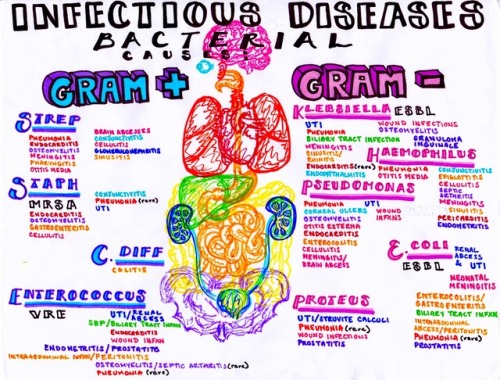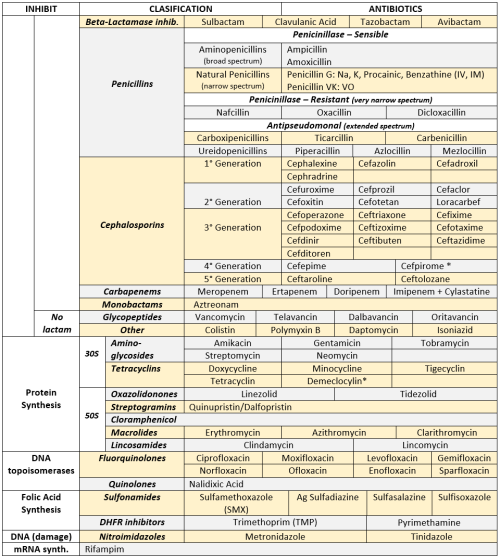….and That Is How Viruses Go About Their Non-lives!!
….and that is how viruses go about their non-lives!!
my biology professor at the end of a lecture about viruses, presumably, i wouldn’t know, i wasn’t paying attention, i’m using context clues here (via scienceprofessorquotes)
More Posts from T-b-a-blr-blog and Others

20.1.18 // studygram: alimastudies
i don’t normally upload pictures of my homework because i don’t tend to spend a lot of effort or time on them as i know i won’t be using it again, but for this biology homework i thought i would do it nicely and use it for my future notes! i need to work on my handlettering oh dear god ahhh i used a crayola supertip for it
ETC shortcuts
FADH2 goes to complex II since 2 hydrogens
RotenONE inhibits complex ONE
AntImIcIn A, 3 III’s ==> Antimycin A inhibits complex 3
Cyan COlored Complex IV ==> Cyanide and CO inhibit complex IV
24 brown fatty aspirins break up ==> 2,4 dnp, aspirin and brown fat are etc uncouplers

Tick-Borne Diseases

Infectious bacterial diseases and where to find them
Live, attenuated Vaccines Available in the US
Live vaccines induce HUMORAL & CELL-MEDIATED immunity
MRS. V.Z. FYI MAP

M umps / M easles
R ubella
S mallpox
.
V aricella Z oster
.
F rancisella tularensis
Y ellow Fever
In fluenza (intranasal)
.
M icobaterium bovis (BCG)
A denovirus
P olio (sabin)


Virus Classification

Recurrente infections with catalase positive organisms in Chronic Granulomatose Disease (CGD)

ANTIBIOTICS CHEAT SHEET :)
Also, REMEMBER!!!!
* Sulfonamides compete for albumin with:
Bilirrubin: given in 2°,3°T, high risk or indirect hyperBb and kernicterus in premies
Warfarin: increases toxicity: bleeding
* Beta-lactamase (penicinillase) Suceptible:
Natural Penicillins (G, V, F, K)
Aminopenicillins (Amoxicillin, Ampicillin)
Antipseudomonal Penicillins (Ticarcillin, Piperacillin)
* Beta-lactamase (penicinillase) Resistant:
Oxacillin, Nafcillin, Dicloxacillin
3°G, 4°G Cephalosporins
Carbapenems
Monobactams
Beta-lactamase inhibitors
* Penicillins enhanced with:
Clavulanic acid & Sulbactam (both are suicide inhibitors, they inhibit beta-lactamase)
Aminoglycosides (against enterococcus and psedomonas)
* Aminoglycosides enhanced with Aztreonam
* Penicillins: renal clearance EXCEPT Oxacillin & Nafcillin (bile)
* Cephalosporines: renal clearance EXCEPT Cefoperazone & Cefrtriaxone (bile)
* Both inhibited by Probenecid during tubular secretion.
* 2°G Cephalosporines: none cross BBB except Cefuroxime
* 3°G Cephalosporines: all cross BBB except Cefoperazone bc is highly highly lipid soluble, so is protein bound in plasma, therefore it doesn’t cross BBB.
* Cephalosporines are "LAME“ bc they do not cover this organisms
L isteria monocytogenes
A typicals (Mycoplasma, Chlamydia)
M RSA (except Ceftaroline, 5°G)
E nterococci

* Disulfiram-like effect: Cefotetan & Cefoperazone (mnemonic)
* Cefoperanzone: all the exceptions!!!
All 3°G cephalosporins cross the BBB except Cefoperazone.
All cephalosporins are renal cleared, except Cefoperazone.
Disulfiram-like effect
* Against Pseudomonas:
3°G Cef taz idime (taz taz taz taz)
4°G Cefepime, Cefpirome (not available in the USA)
Antipseudomonal penicillins
Aminoglycosides (synergy with beta-lactams)
Aztreonam (pseudomonal sepsis)
* Covers MRSA: Ceftaroline (rhymes w/ Caroline, Caroline the 5°G Ceph), Vancomycin, Daptomycin, Linezolid, Tigecycline.
* Covers VRSA: Linezolid, Dalfopristin/Quinupristin
* Aminoglycosides: decrease release of ACh in synapse and act as a Neuromuscular blocker, this is why it enhances effects of muscle relaxants.
* DEMECLOCYCLINE: tetracycline that’s not used as an AB, it is used as tx of SIADH to cause Nephrogenic Diabetes Insipidus (inhibits the V2 receptor in collecting ducts)
* Phototoxicity: Q ue S T ion?
Q uinolones
Sulfonamides
T etracyclines

* p450 inhibitors: Cloramphenicol, Macrolides (except Azithromycin), Sulfonamides
* Macrolides SE: Motilin stimulation, QT prolongation, reversible deafness, eosinophilia, cholestatic hepatitis
* Bactericidal: beta-lactams (penicillins, cephalosporins, monobactams, carbapenems), aminoglycosides, fluorquinolones, metronidazole.
* Baceriostatic: tetracyclins, streptogramins, chloramphenicol, lincosamides, oxazolidonones, macrolides, sulfonamides, DHFR inhibitors.
* Pseudomembranous colitis: Ampicillin, Amoxicillin, Clindamycin, Lincomycin.
* QT prolongation: macrolides, sometimes fluoroquinolones

30 . 06 . 2017 Microbiology notes !!! Yesterday I took my physics final exam and it went great: I got a 27/30, which is way more than what I expected as Physics is one of my worst subjects. My next exam, microbiology, is in four days and I’m starting to feel a bit anxious about it as it’s a pretty tough exam but I’ll try to do my best !
-
 bolioptics liked this · 6 years ago
bolioptics liked this · 6 years ago -
 etherealepidemic reblogged this · 6 years ago
etherealepidemic reblogged this · 6 years ago -
 etherealepidemic liked this · 6 years ago
etherealepidemic liked this · 6 years ago -
 trans-caffinated liked this · 6 years ago
trans-caffinated liked this · 6 years ago -
 inspadefuls liked this · 6 years ago
inspadefuls liked this · 6 years ago -
 thisgirllikeme liked this · 6 years ago
thisgirllikeme liked this · 6 years ago -
 oxymoronwithanidea liked this · 6 years ago
oxymoronwithanidea liked this · 6 years ago -
 justanormalcryingfangirl liked this · 6 years ago
justanormalcryingfangirl liked this · 6 years ago -
 redheddebeauty liked this · 6 years ago
redheddebeauty liked this · 6 years ago -
 uuuuuhhhhhhhhhhhhhhhhhh liked this · 6 years ago
uuuuuhhhhhhhhhhhhhhhhhh liked this · 6 years ago -
 t-b-a-blr-blog reblogged this · 6 years ago
t-b-a-blr-blog reblogged this · 6 years ago -
 t-b-a-blr-blog liked this · 6 years ago
t-b-a-blr-blog liked this · 6 years ago -
 is-thereanythingbetterthanpussy liked this · 7 years ago
is-thereanythingbetterthanpussy liked this · 7 years ago -
 valdehir-blog liked this · 7 years ago
valdehir-blog liked this · 7 years ago -
 danielm82703-blog liked this · 7 years ago
danielm82703-blog liked this · 7 years ago -
 sweatycreatorcollectionsstu-blog liked this · 7 years ago
sweatycreatorcollectionsstu-blog liked this · 7 years ago -
 aspienerdy reblogged this · 7 years ago
aspienerdy reblogged this · 7 years ago -
 jaded-draconevix reblogged this · 7 years ago
jaded-draconevix reblogged this · 7 years ago -
 jaded-draconevix liked this · 7 years ago
jaded-draconevix liked this · 7 years ago -
 dcgoddess liked this · 7 years ago
dcgoddess liked this · 7 years ago -
 danisstudyblr liked this · 7 years ago
danisstudyblr liked this · 7 years ago -
 life-is-pointless-was-taken liked this · 7 years ago
life-is-pointless-was-taken liked this · 7 years ago -
 6purplescissors reblogged this · 7 years ago
6purplescissors reblogged this · 7 years ago -
 6purplescissors liked this · 7 years ago
6purplescissors liked this · 7 years ago -
 seventinyvelociraptors liked this · 7 years ago
seventinyvelociraptors liked this · 7 years ago -
 mercyrulesgames liked this · 7 years ago
mercyrulesgames liked this · 7 years ago -
 o98 liked this · 7 years ago
o98 liked this · 7 years ago -
 prokocky-blog reblogged this · 7 years ago
prokocky-blog reblogged this · 7 years ago -
 prokocky-blog liked this · 7 years ago
prokocky-blog liked this · 7 years ago -
 ellunaria liked this · 7 years ago
ellunaria liked this · 7 years ago -
 distinguishedenemypolice liked this · 7 years ago
distinguishedenemypolice liked this · 7 years ago -
 fleur-xael liked this · 7 years ago
fleur-xael liked this · 7 years ago -
 epicchameleon liked this · 7 years ago
epicchameleon liked this · 7 years ago -
 humanlikebeing liked this · 7 years ago
humanlikebeing liked this · 7 years ago -
 jeokinz liked this · 7 years ago
jeokinz liked this · 7 years ago -
 jozearavi-blog liked this · 7 years ago
jozearavi-blog liked this · 7 years ago -
 shipeveryonetogether liked this · 7 years ago
shipeveryonetogether liked this · 7 years ago -
 0kosedeki-kedi liked this · 7 years ago
0kosedeki-kedi liked this · 7 years ago -
 sundays-at-tiffanys liked this · 7 years ago
sundays-at-tiffanys liked this · 7 years ago -
 now-wouldyoukindly liked this · 7 years ago
now-wouldyoukindly liked this · 7 years ago -
 aprueba-de-amor reblogged this · 7 years ago
aprueba-de-amor reblogged this · 7 years ago